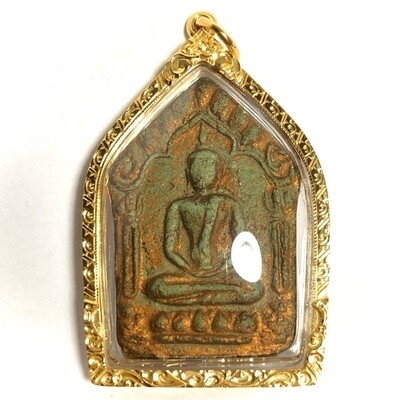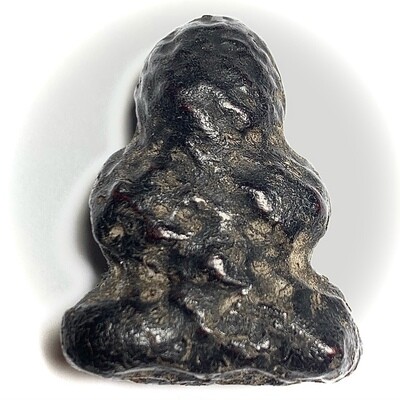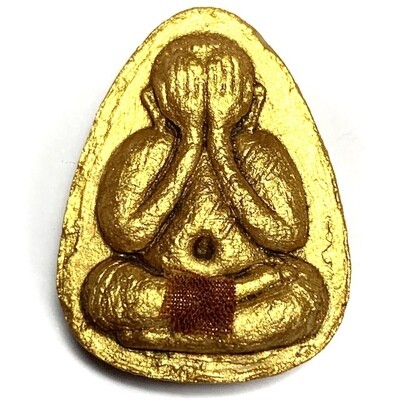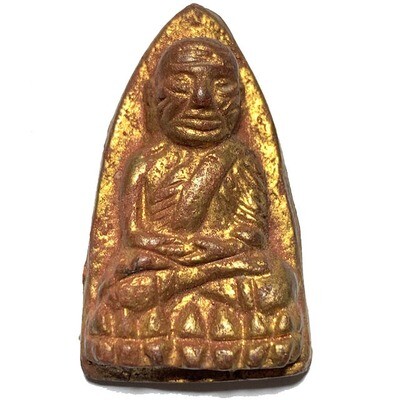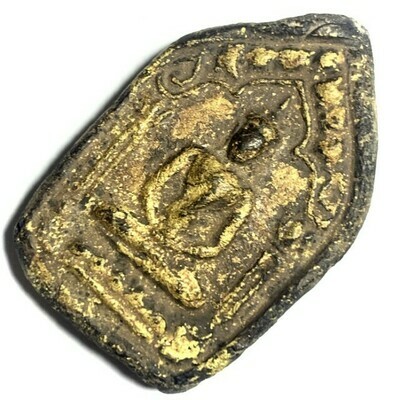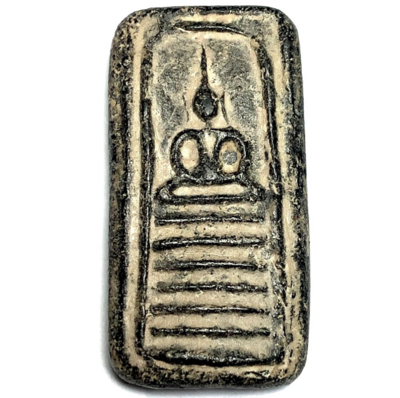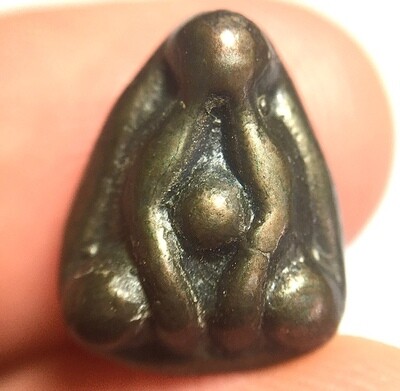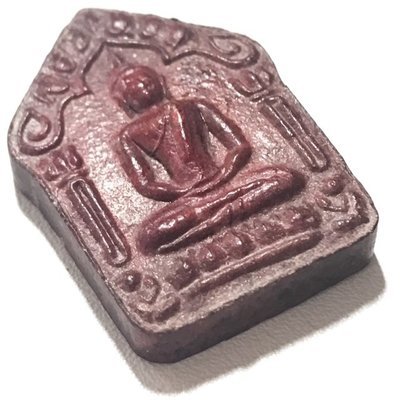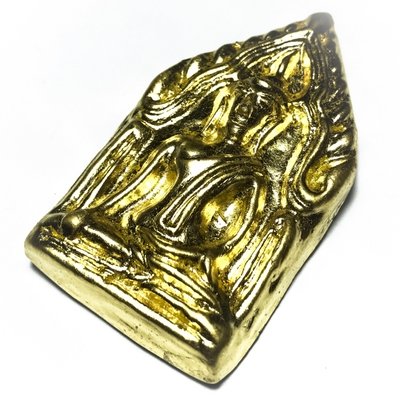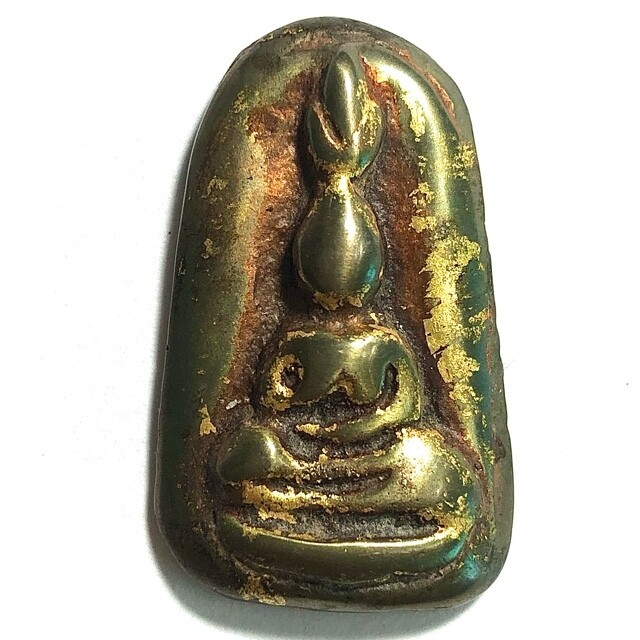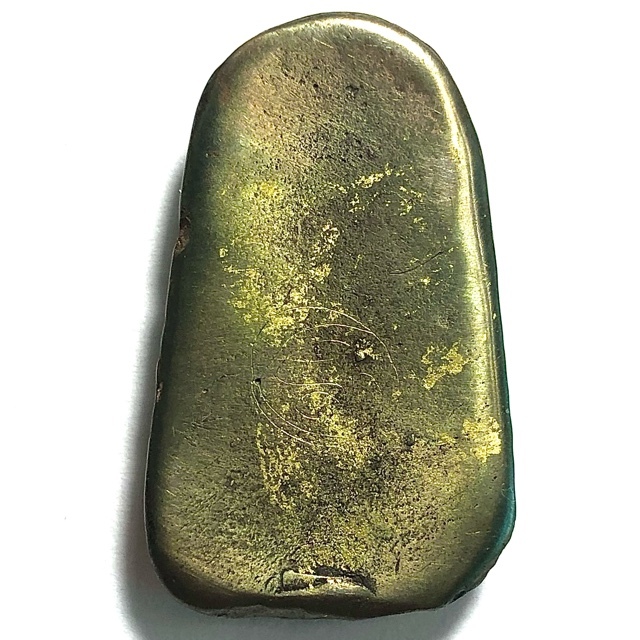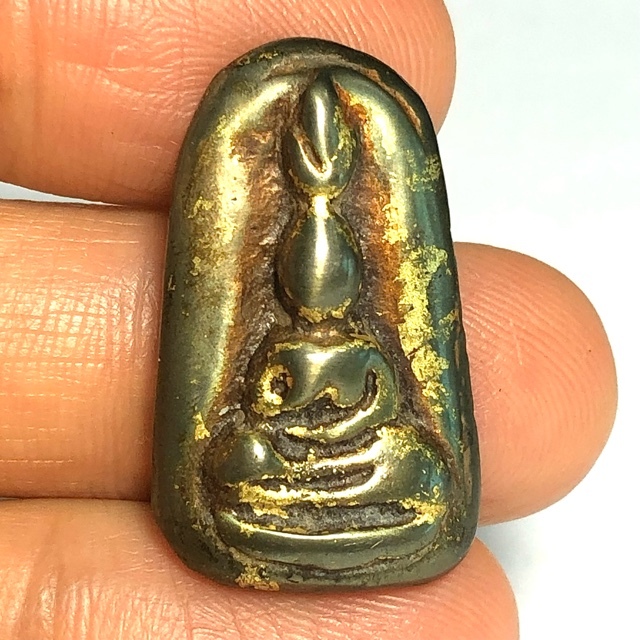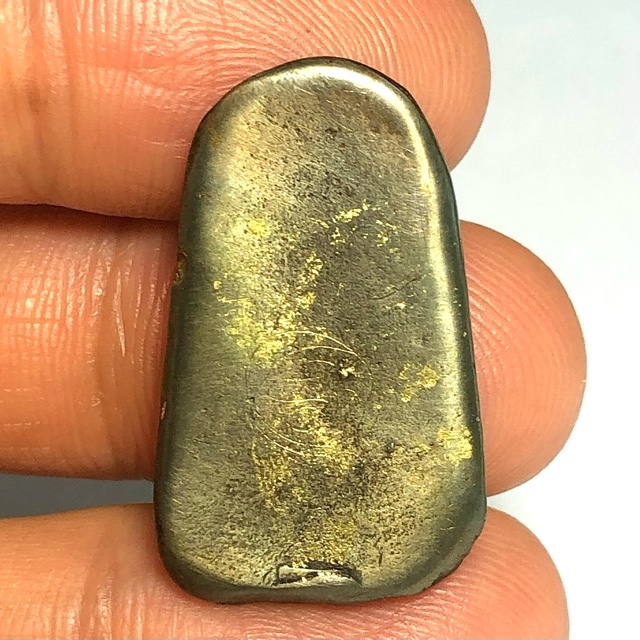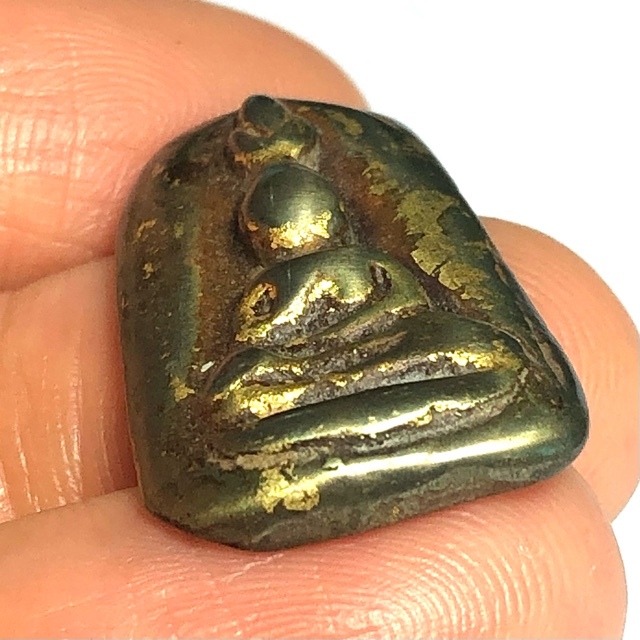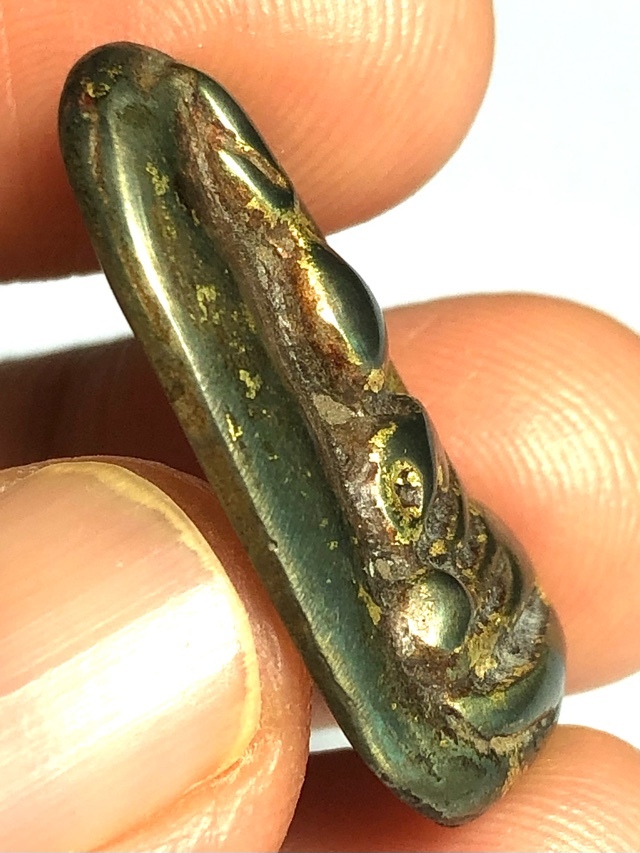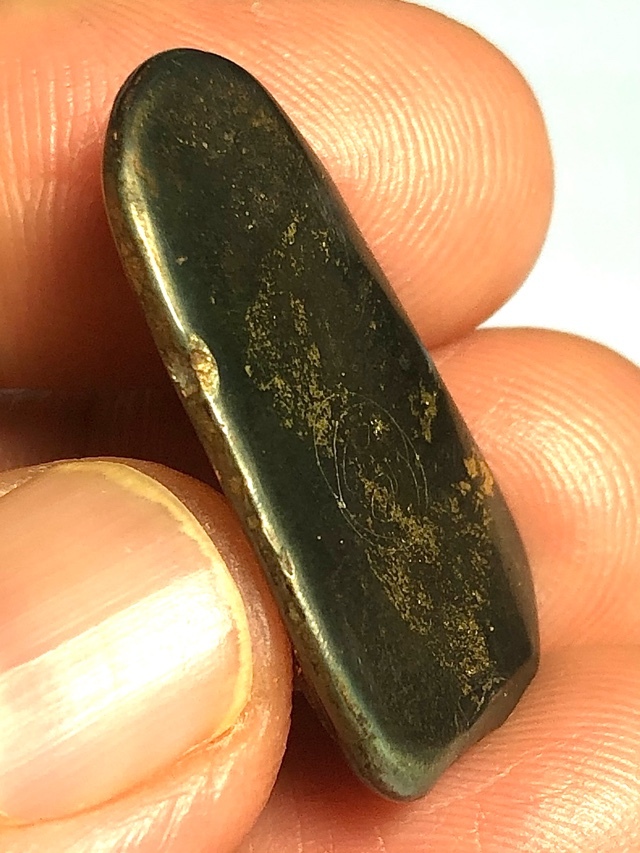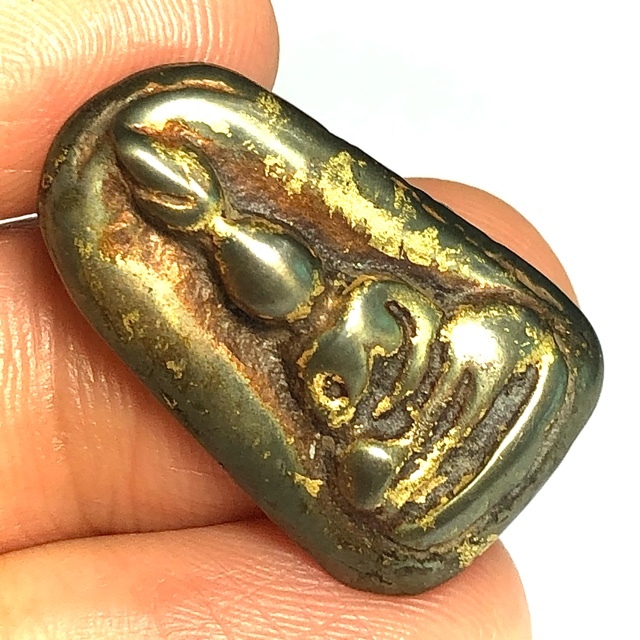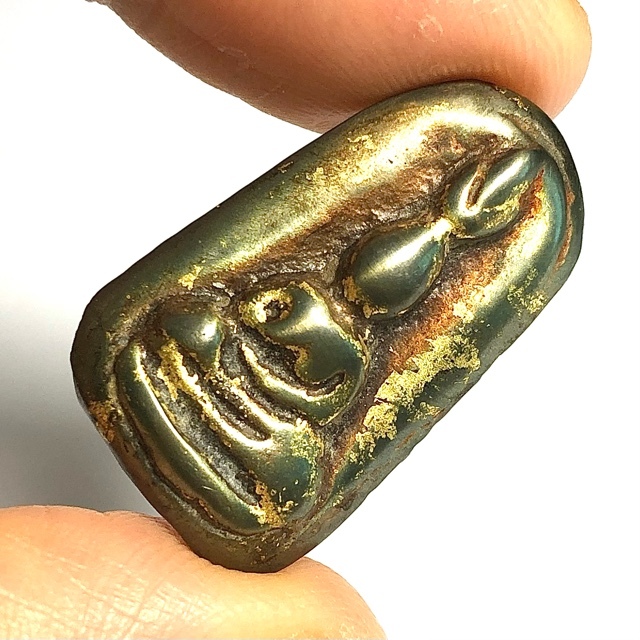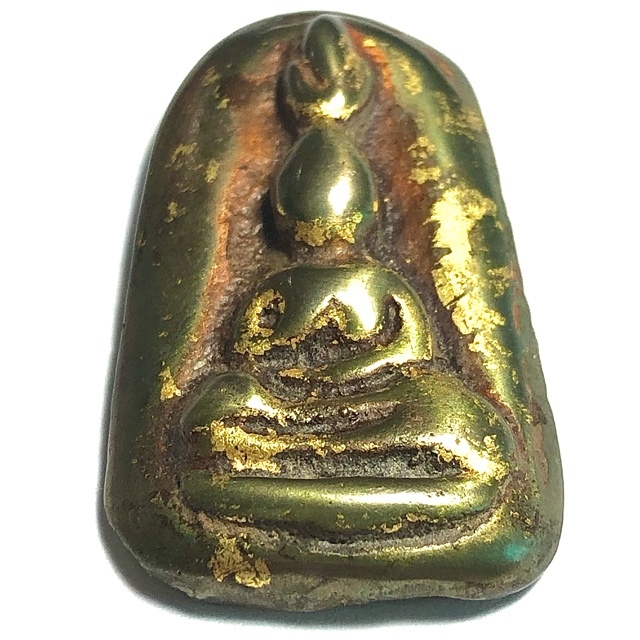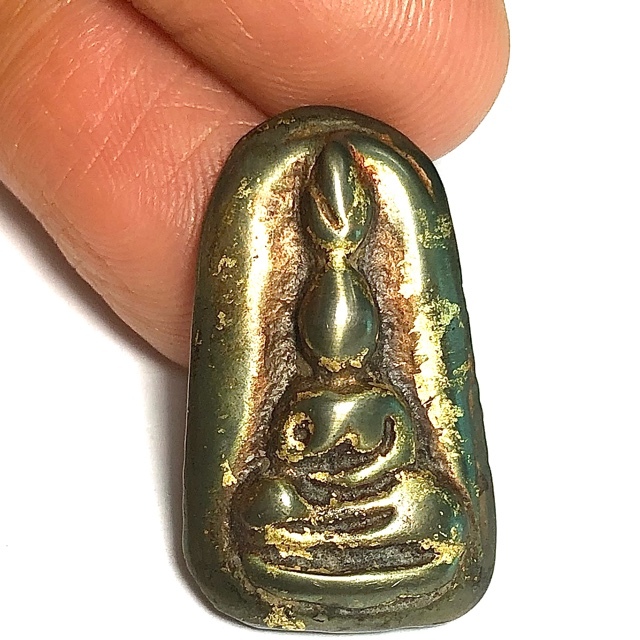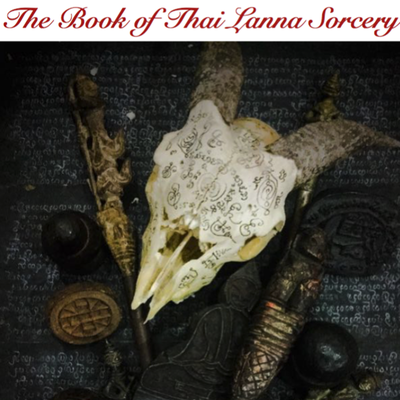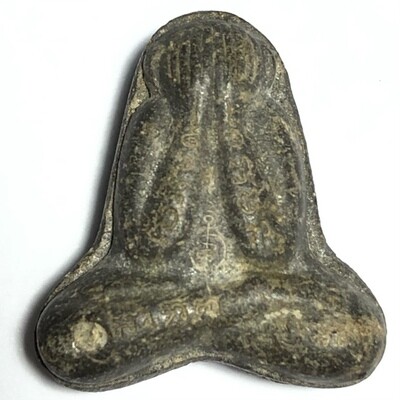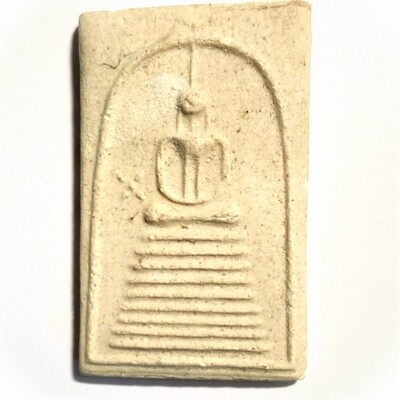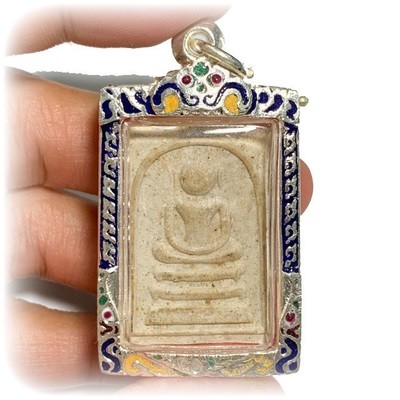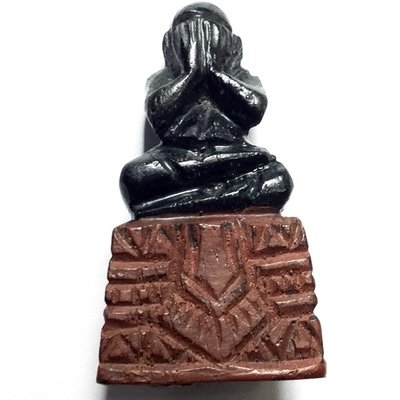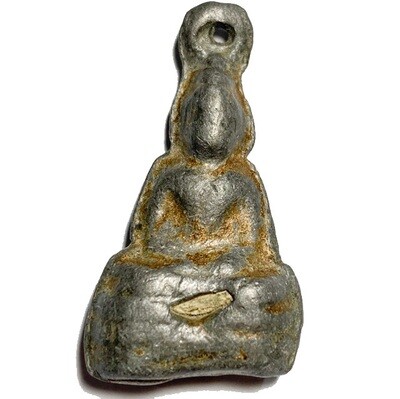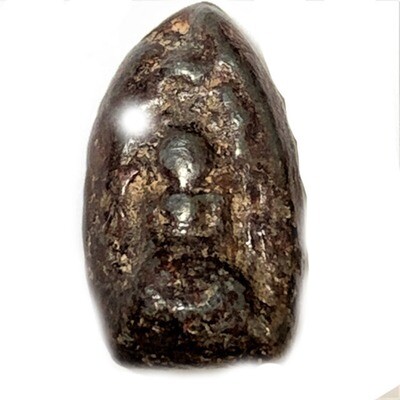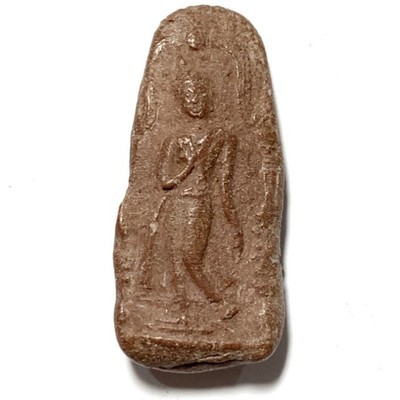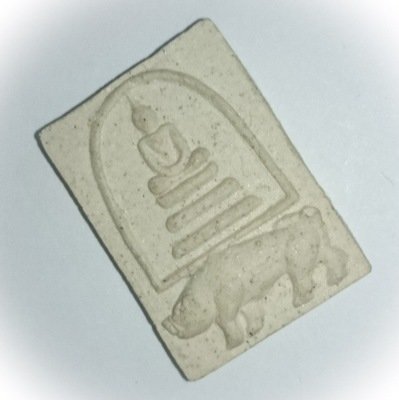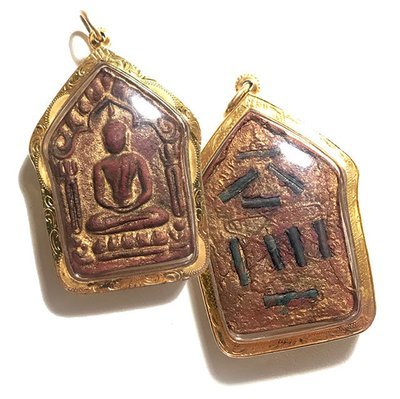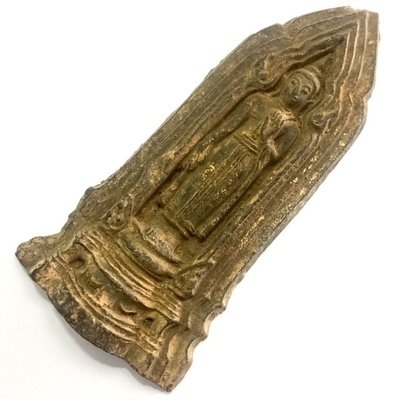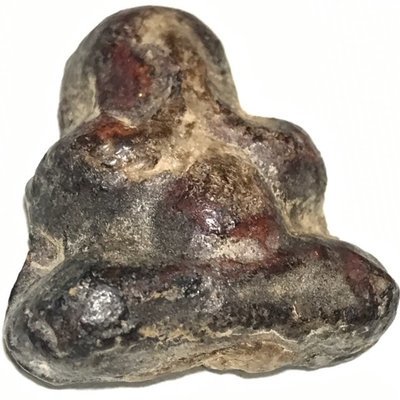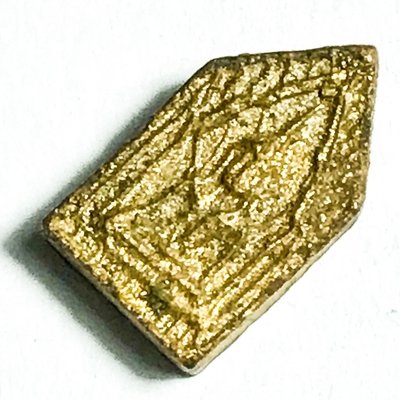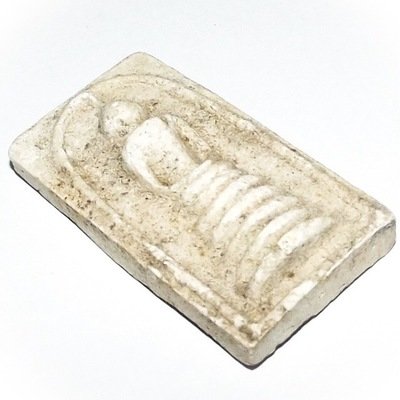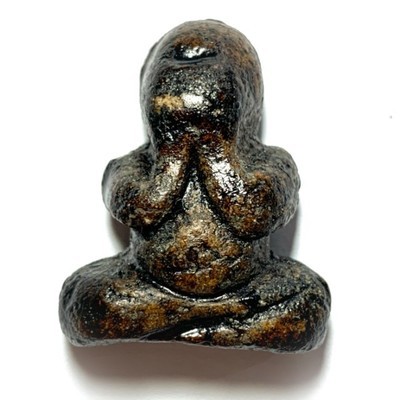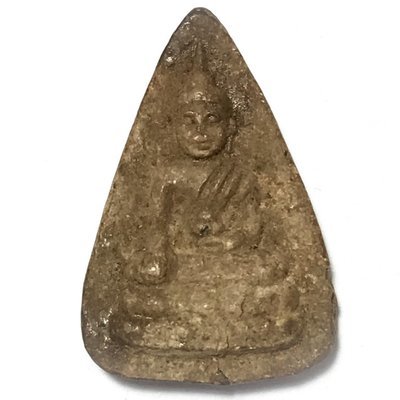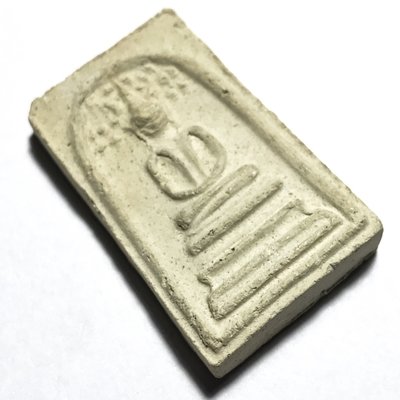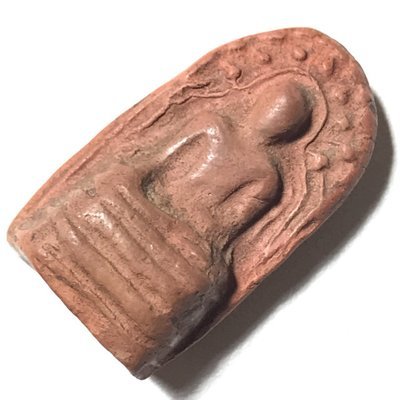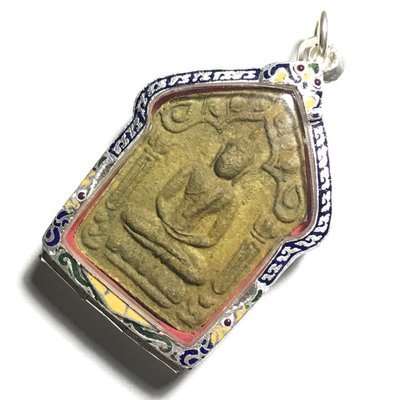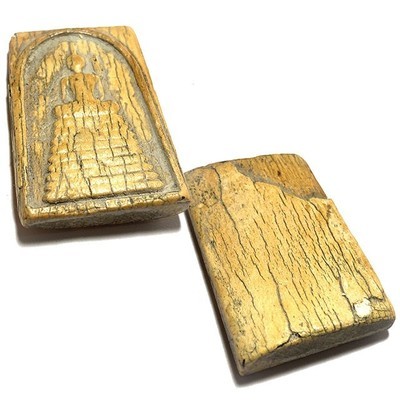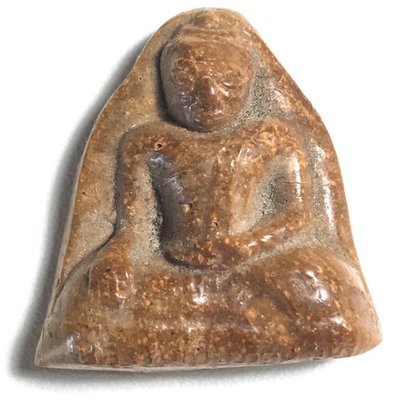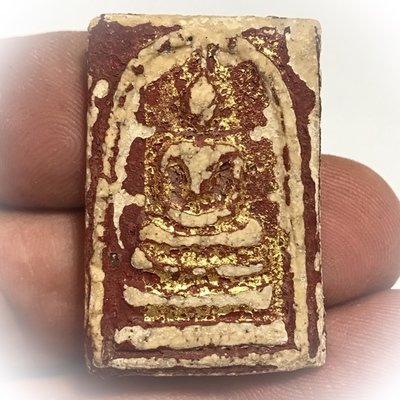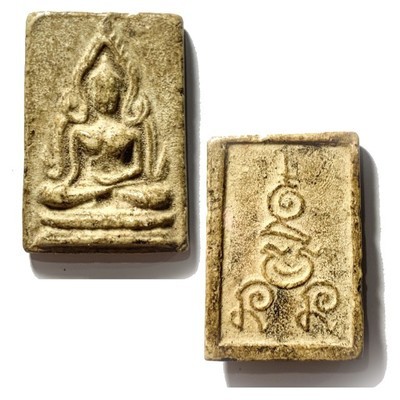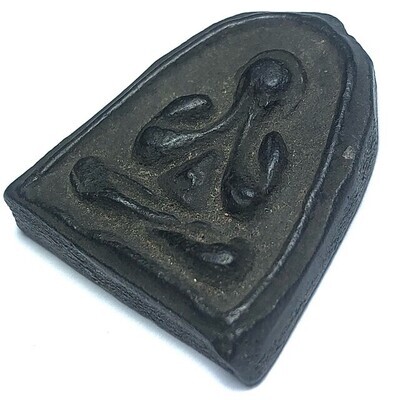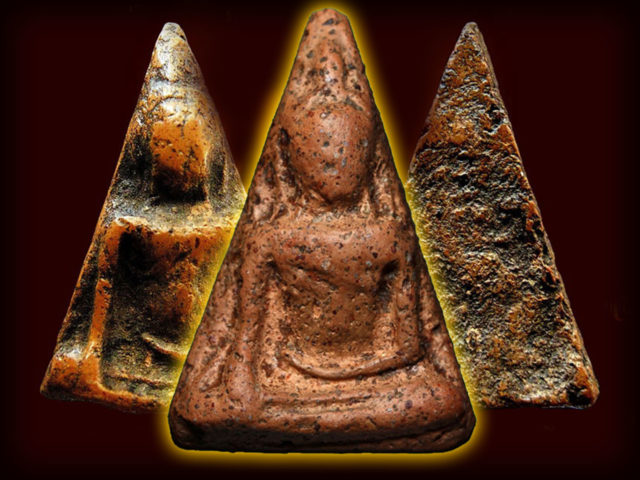
The Legend of Pra Nang Paya Amulet
Pra Nang Paya Benjapakee Amulet
Pra Nang Paya, or ‘Pra Pim Nang Paya, is an amulet from the Ayuttaya Period, which was artistically influenced in its design factors by the Artisans of the Sukhothai Periodic Style. As to the composition of the design of the Pra Nang Paya amulet, it can be said that it contains the work of the Sukhothai Artisan as its heritage, and is a Mark of Preservation of the Eight Periodic Buddhist Art styles found in Thai Sacred Arts and Amulets.
The Pra Nang Paya amulet was first discovered within the Chedi Stupa at Wat Nang Paya in Pitsanuloke, in the year 2444 BE, as King Julalongkorn Rama 5 was visiting Pitsanuloke, to be present for the casting of the Chinarat Replica Buddha at Wat Pra Sri Radtana Sasadaram. The King was invited to come and receive a large number of them as gifts (the best selected), and his Majesty then distributed them to the Government Officials and other Courtiers and Devotees. The remaining amulets, he took back to Bangkok. Apart from the ‘Serm Duang’ Horoscope Improving effects of this Purely Buddhist Amulet, the amulet is Famous for its Metta Mahaniyom, Klaew Klaad, Kong Grapan Chadtri, and Maha Lap powers.
The Pra Nang Paya Benjapakee amulet has 7 different Pim in total.
Pra Nang Paya Pim Khao Koeng.
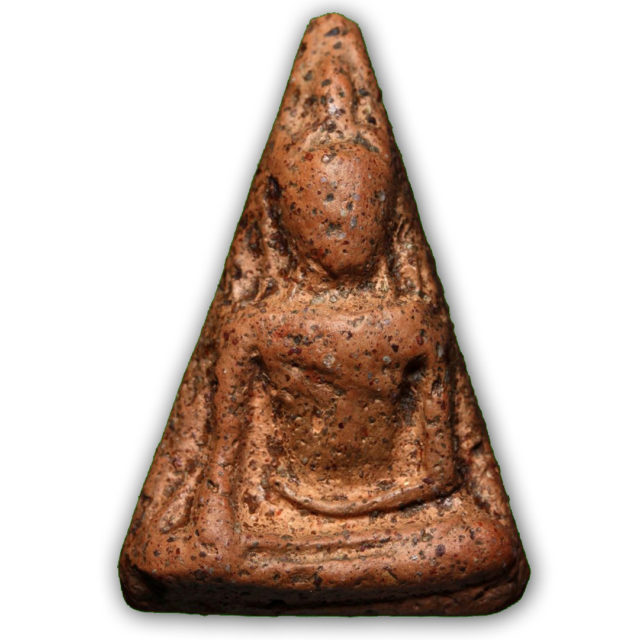
Pra Nang Paya Pitsanuloke Pim Khao Koeng Benjapakee Hiding Place Amulet
Pra Nang Paya Pim Khao Dtrong
(splits into two models; Khao Koeng Tammada, and Khao Koeng Mer Dtok Khaa).
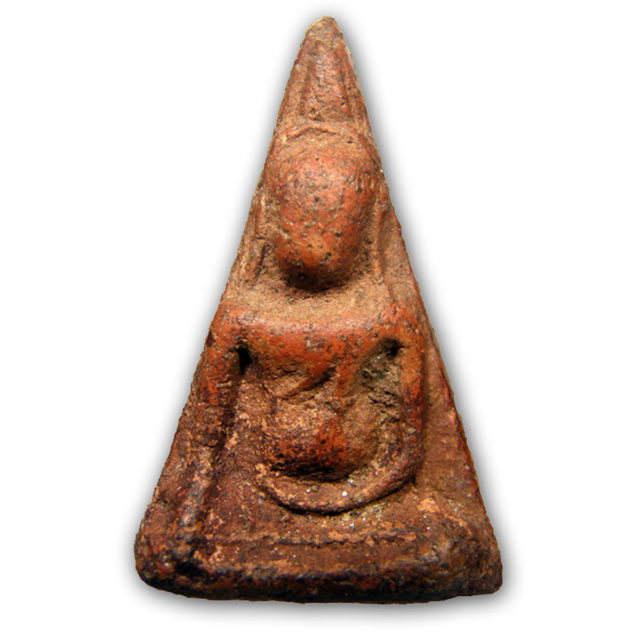
Pra Nang Paya Pitsanuloke Pim Khao Dtrong Benjapakee Amulet
Pra Nang Paya Pim Ok Noon Yai
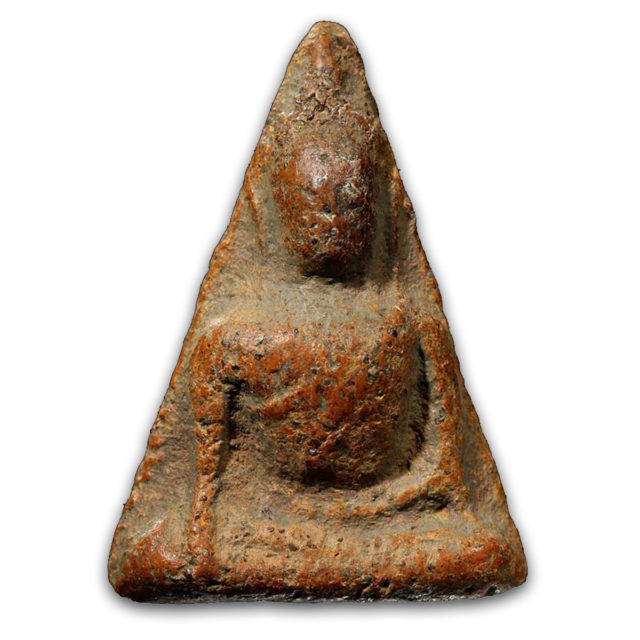
Pra Nang Paya Pim Ok Noon Yai Benjapakee Amulet – a Classic Pra Niyom Master Class Amulet
Pra Nang Paya Pim Ok Noon Lek.
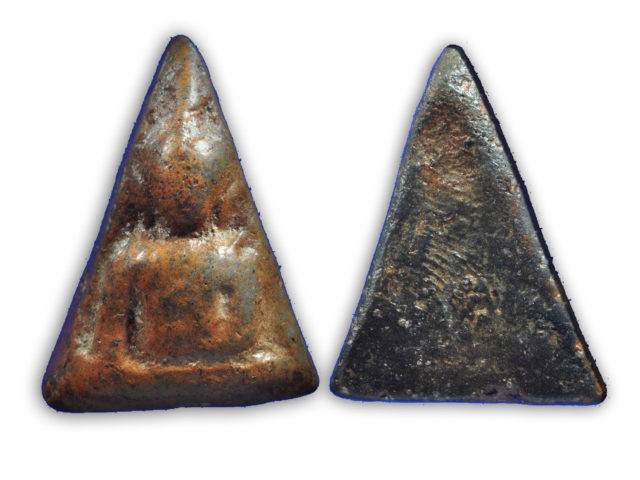
Pra Nang Paya Pitsanuloke Pim Ok Noon Lek Benjapakee Amulet of Historical Fame and Legend
Pra Nang Paya Pim Sangkati.
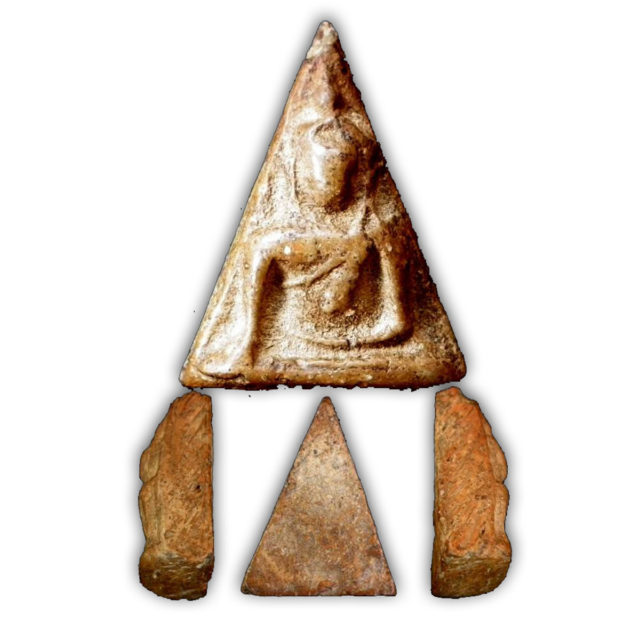
Pra Nang Paya Pitsanuloke Pim Sangkati Benjapakee Amulet – a very rare model to encounter from the seven Pim discovered in the Pitsanuloke Find
Pra Nang Paya Pim Ok Faeb also called ‘Pim Taewada’.
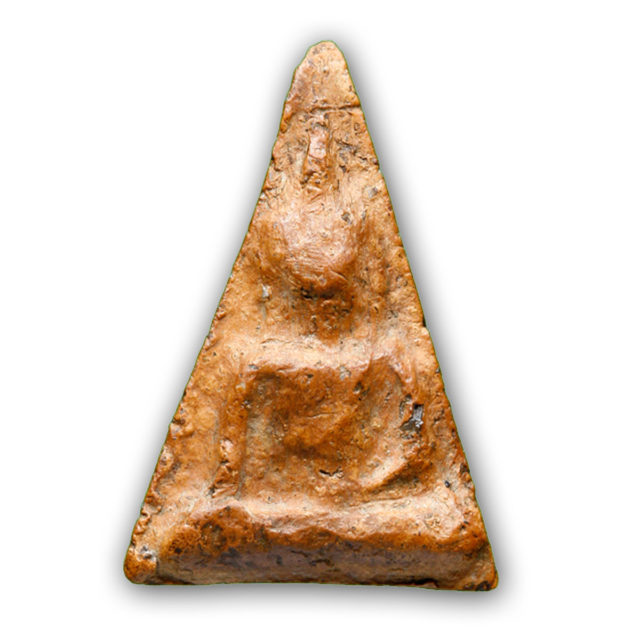
Pra Nang Paya Pim Tewada – a Classic Benjapakee Pra Niyom Master Class Amulet
Pra Nang Paya Pim Pised
(includes various amulets which do not fit in the above categories, such as the Khao Buang, or the Pim Yai Pised).
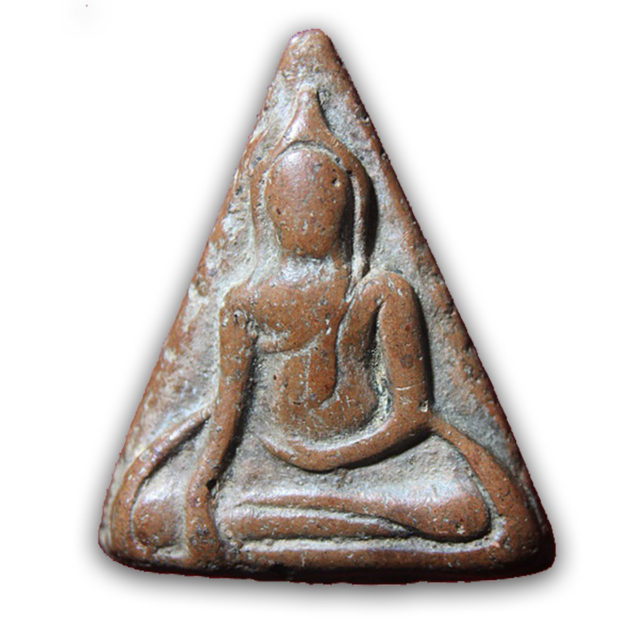
Pra Nang Paya Pim Pised Rare Special Model
Pra Pim Pra Put Son Ha Pim Gaes 3 Plaay Nuea Maekasit See Tong Pla Hlai 2460 BE Luang Por Tap Wat Anong
One of the rarest models of this great olden days master of alchemical metallurgy, hand inscribed, and a Pristine condition Centenarian Amulet of immense rarity, and a very ancient and sacred Wicha, the Pra Put Pim Son Ha Gaes Sam Plaay, in Nuea Maekasit See Tong Pla Hlai Golden Alchemical Brazen Mercurial-Metal amulet of LP Tap (2.5 x 1.5 Cm). This exhibit is in in the extremely rare and beautiful See Tong Pla Hlai Golden Rainbow Flamed color, and a highly preferred Master-Class Pra Niyom amulet from the great Luang Por Tap of Wat Anongkaram (commonly known as 'Wat Anong'). The rear face has received hand made Khom Agkhara spell inscriptions from the hand of Luang Por Tap

Below; various models of Buddha images from the pantheon of Luang Por Tap
Luang Por Tap was an Olden Days Master Monk of the previous Buddhist Century, who was highly renowned for his Mastery of Alchemy, and Kata Akom Spellcasting Methods.
Below: all of the best known accepted major models of Pid Ta Maekasit Luang Por Tap
At that time, Somdej Pra Puttajarn Nuam was the abbot of Wat Anongkaram, and Luang Por Tap was a 'Look Wat' (one of the temple monks), but in truth, Luang Por Tap was much an elder monk to the abbot himself, and much more advanced in his practices. Luang Por Tap became immersed in the Wicha Len Prae Taat (Alchemical Metallurgy), and Mastered it until he could produce the legendary substance known as 'Maekasit' metallic alchemical alloy.
The Wicha Maekasit of Luang Por Tap was so famously powerful, that even the great Luang Phu Sukh of Wat Pak Klong Makham Tao in Chainat came, to exchange sorcery methods with Luang Por Tap, in order to obtain the Wicha Maekasit. This is perhaps how and why Luang Por Tap was able to also make Luang Phu Sukh's famous Pra Pim Prapa MOndon R$asamee amulets so similarly to Luang Phu Sukh himself.
Luang Phu Sukh then took this Wicha back to Wat Pak Klong Makham Tao, and made many famous amulets of his pantheon using the Wicha Maekasit of Luang Por Tap, such as the oblong shaped Pra Somdej Prapa Mondon Sum Rasamee.
The Maekasit amulets of Luang Por Tap, are known to have different tones of color which shimmer through the metallic surface, tanging from silvery, to some most highly preferred exhibits with blackish, blue-green, golden (see tong pla hlai), or greenish metallic sheen, similar to the Bluebottle-Green-Purple metallic color of Lek Lai See Peek Malaeng Tap. There are a number of Great Master-Class amulets of Luang Por Tap, such as the Pra Pid Ta Maekasit, Look Om, and Prort Gror metallic Arahant Ball. Only very few Loom Prort Gror Were made, as they were used to place under the Uposatha Shrinerooms of Temples, and only handed out by Luang Por Tap on rare occasions. The most highly prized, rare and sought-after amulets of Luang Por Tap, were made during the time when both Luang Por Tap and the then abbot, Luang Por Nuam Puttasārō were both alive, and collaborating with amulets. Luang Por Tap's amulet pantheon is one of the most fervently sought and collected in the high end amulet collector community, and are considered to be among the most powerful alchemical amulets of all Masters. Luang Por Tap made many models of amulets in Nuea Maekasit and Parort alchemical metals, some of the most well known being the Pra Pid Ta Maekasit, Pra Pim Pang Son Ha, Look Om Maekasit, the Look Prort Gror, and Pra Chayawat.
Luang Por Tap also inherited the Wicha Hung Nam Man Montra Saksit, for making Sacred Consecration Oil, from his Kroo Ba Ajarn Luang Por Nuam (6th abbot of Wat Anongkaram). Luang Por Nuam's amulets are even rarer to find than those of Luang Por tap himself, but it is Luang Por Tap who gained more National and International Attention. The first edition Rian Run Raek of Luang Por Nuam is especially sought after and carries an immensely high market value in the present era. However, only a few were ever made, and so they are very rarely seen.
Luang Por Tap was also known to have been a close accomplice to Pra Sangkarach Pae of Wat Sutat, and Luang Phu Sukh ( Wat Pak Klong Makham Tao). it went on record many times that every time that Somdej Pra Sangkarach (Pae), would make an edition of the world famous Master Class Pra Kring and Pra Chayawat Wat Sutat, he would always invite Luang Por Tab to come and assist in the Buddha Abhiseka, and Nang Prok Empowerment Ceremonies, as a monk of Adept Sorcery.
As to Luang Por Tap's friendship with Luang Phu Sukh of Wat Pak Klong Makham Tao, it is said they were extremely intimate friends, as they were both from Chainat Province. Luang Por Tap was born in 2374 BE, amd was ordained at a young age as a Samanera Novice Monk, and then disrobed to help his family, and later ordained a second time as a fully fledged Bhikkhu, in the year 2413 BE.
At first, he resided at the temple of Wat Raman, for the first year, and then he moved to stay at Wat Anongkaram. Every time the rainy season retreat was over, Luang Por Tap would leave the temple, and wander the forests on Tudong, practicing Vipassana Kammathana Mindfulness and Jhanic Meditation, every year for 40 years, developing immensely advanced self control and self mastery, which caused Powerful Wicha to arise within his mind.
Luang Por Tap's famous Pra Pid Ta amulets are found in Pim Chalud, and Pim Tammada models, both of which were made in Pim Lek, Klang and Yai (small, medium and large), Pim Dtaeng and Pim Mai Dtaeng (refined, or not refined with filing). A very few amulets are sometimes found with a Yant, or Khom Inscription on the rear face, which are among the rarest of all his amulets, and considered to be World-Class Pim Niyom Masterpieces.
Luang Por Tap made his powerful Maekasit amulets up to his passing in the year 2480 BE, making his pantheon now a centenarian collection from over a Century ago. The Amulets of Luang Por Tap, are highly revered for Kong Grapan Chadtri Klaew Klaad Maha Lap Metta Mahaniyom Maha Ud power.
